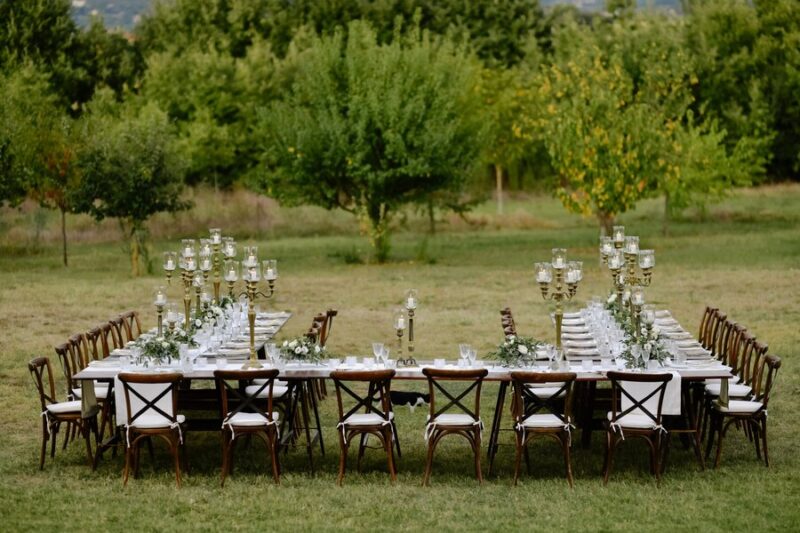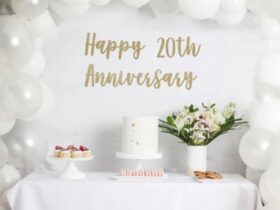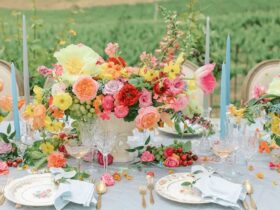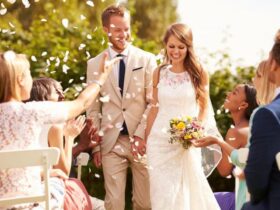Creating the seating chart is one of the most challenging aspects of planning a wedding. Especially, it is not easy to please everyone when considering the question of who sits on the top table at a wedding. However, you no longer have to worry about this issue, we have a variety of adaptable suggestions that could potentially make the day a success.
Who Normally Sits on The Top Table At A Wedding?
The top table at a wedding is typically reserved for the wedding party and close family members. The exact seating arrangement may vary based on cultural traditions and personal preferences, but commonly, you can expect to find the following individuals at the top table:
- Bride and Groom: The newlyweds sit at the center of the top table, facing the rest of the guests.
- Parents of the Bride: Traditionally, the father and mother of the bride sit next to the bride.
- Parents of the Groom: Similarly, the father and mother of the groom sit next to the groom.
- Best Man: The best man usually sits next to the groom.
- Maid of Honor (or Chief Bridesmaid): The maid of honor typically sits next to the bride.
These are the core members to answer the question of who sits on the top table at a wedding, but depending on the size and configuration of the top table, additional people such as bridesmaids, groomsmen, grandparents, or close friends may also be seated there. It’s ultimately up to the couple and their families to decide the seating arrangement that feels right for them.
Is A Head Table Essential For Weddings, And What Other Options Can Be Considered In Its Place?
A head table is a common tradition at weddings, but it’s not essential. Many couples choose alternative seating arrangements based on their preferences, the size of their wedding party, and the overall atmosphere they want to create. Here are some alternative options from Uniquegifts if you don’t want to choose who sits on the top table at a wedding:
- Sweetheart Table: This is a small table just for the bride and groom. It allows the couple to have a private moment together during the reception. Some couples prefer this intimate setting, especially if they want to enjoy a quiet meal together.
- Family-style Table: The bride and groom sit with their respective families at separate tables. This can be a good answer to the question of who sits on a wedding top table if the families are large or if there are stepfamilies involved.
- Distributed Tables: Instead of having a designated head table and having trouble deciding who sits at the head table at a wedding, the bride and groom can choose to sit among their guests. They may have a table with close family and friends, or they can move around and visit different tables during the meal.
- Round Tables: Opt for a seating arrangement where the bride and groom are seated at a round table with their wedding party and perhaps their parents. This allows for a more inclusive and communal atmosphere.
- No Designated Table: Some couples choose not to have a specific head table or define who sits at the head table at a wedding. In this case, they can sit at any table they choose, making it a more relaxed and informal arrangement.
Guideline for Planning Who Sits On The Top Table At A Wedding
While there are no hard and fast rules for who normally sits on the top table at the wedding, some guidelines can help you plan a wedding and arrangement that reflects your style and priorities.
Dos and Don’ts when planning the head table.
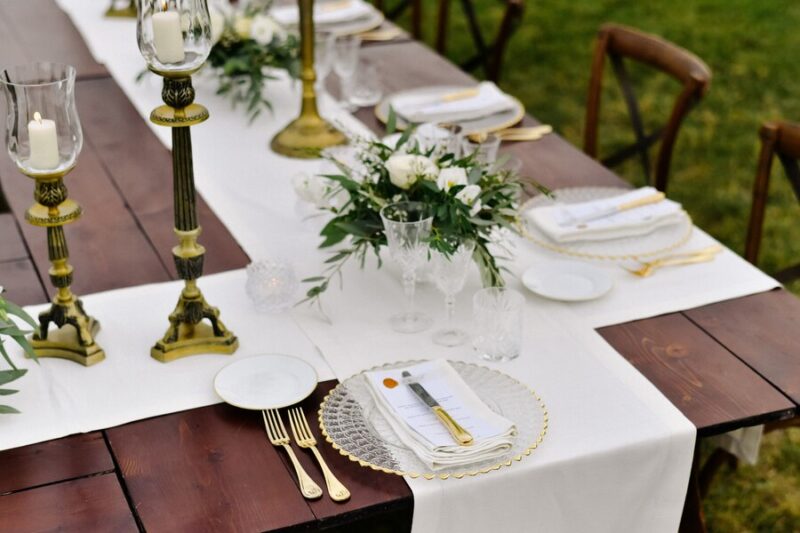
When planning who sits on a wedding top table, there are several dos and don’ts to consider to ensure a smooth and enjoyable experience for the couple, wedding party, and guests. Here are some guidelines from our celebration tips:
Dos:
- Do consider your guest count and venue size. A small, intimate wedding might not need a formal head table, while a large wedding might require a larger one to accommodate important guests. Choose an arrangement that fits the space comfortably without feeling cramped.
- Do consider accessibility. Ensure everyone, who sits on the top table at a wedding can easily enter and exit their seats, especially if there are guests with mobility limitations.
- Do prioritize your comfort and preferences. The head table is for you and your loved ones to enjoy the evening. If you envision yourselves feeling isolated at a large table, opt for a sweetheart table or mixed seating.
- Do personalize the table! Decorate it with arrangements of wedding table flower, candles, or other elements that reflect your wedding theme and style. This will make it feel special and unique.
Don’ts:
- Don’t feel obligated to have a head table if it doesn’t suit your vision. There are plenty of alternative seating arrangements that can be just as beautiful and functional.
- Don’t make guests feel like outsiders. If you do plan who sits at the head table at a wedding, ensure it’s not too exclusive. Encourage interaction between the head table and other guests throughout the night.
- Don’t overcrowd the head table. Aim for no more than 8-10 guests unless the venue allows for a larger table comfortably. Guests should have enough space to eat, drink, and converse without feeling cramped.
- Don’t focus on who sits on the top table at a wedding and forget about the rest of the guests. Make sure the head table isn’t positioned in a way that obstructs the view of the dance floor or other important areas for the rest of your guests.
Tips to craft the ideal wedding seating arrangement
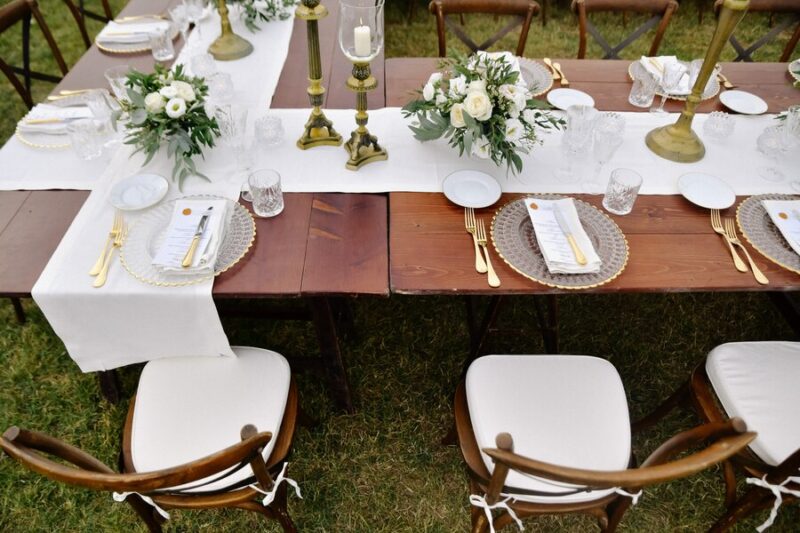
Crafting the ideal wedding seating plan can be a challenging but rewarding task. It requires consideration of various factors, including relationships, personalities, and guest preferences. Here are some tips to help you create a successful and enjoyable seating plan:
- Start Early: Begin the seating arrangement process well in advance of the wedding day to allow for adjustments and changes.
- Understand Your Venue Layout: Familiarize yourself with the venue’s layout, including the size and shape of tables, so you can plan who normally sits on the top table at the wedding accordingly.
- Categorize Guests: Divide your guest list into groups based on relationships and common interests. Consider creating categories like family, friends, work colleagues, and college buddies.
- Mix and Match: Aim for a balanced mix of personalities at each table to encourage conversation and avoid isolating individuals.
- Accommodate Special Needs: Consider any special needs or requests from guests, such as dietary restrictions or mobility issues, when planning the seating arrangement.
- Be Mindful of Exes: If there are ex-partners on the guest list, be mindful of their presence and try to seat them comfortably, taking into consideration the dynamics.
- Communicate with Vendors: Share the finalized seating plan and list of who sits on the top table at a wedding with your caterer and venue coordinator to ensure a smooth meal service.
Common top table seating plan FAQs
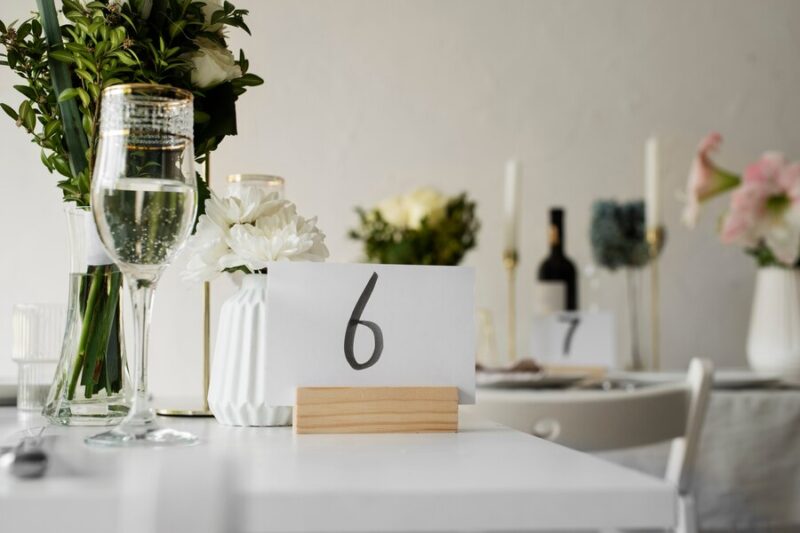
When it comes to planning who sits on the top table at a wedding, several common questions and concerns may arise. Here are some frequently asked questions (FAQs) related to top table seating plans:
1. What if some members of the wedding party don’t get along?
If there are interpersonal dynamics within the wedding party, try to seat individuals strategically to minimize potential conflicts. Open communication with the wedding party members can also help address any concerns.
2. Can we change the seating arrangement at the last minute?
While last-minute changes can be challenging, they are not impossible. Keep open lines of communication with your wedding planner, venue coordinator, and catering team to facilitate any necessary adjustments.
3. How do we handle dietary restrictions at the top table?
Communicate any dietary restrictions or preferences to the caterer in advance. This ensures that appropriate meals are provided for the individuals who sits on the top table at a wedding.
4. How big should the top table be?
Ideally, 8-10 guests. Aim for everyone to converse comfortably without feeling cramped.
5. What if I have divorced parents?
Seat them separately at the top table or at different tables altogether. You can also opt for a mixed seating arrangement to avoid discomfort.
6. What if I have guests with potential conflicts?
Seat them strategically with buffers in between or on different tables. Prioritize harmony and avoid awkwardness.
In conclusion, defining who sits on the top table at a wedding is a nuanced and meaningful aspect of the celebration. While certain traditional guidelines exist, every wedding is unique, and personal preferences should take precedence.

